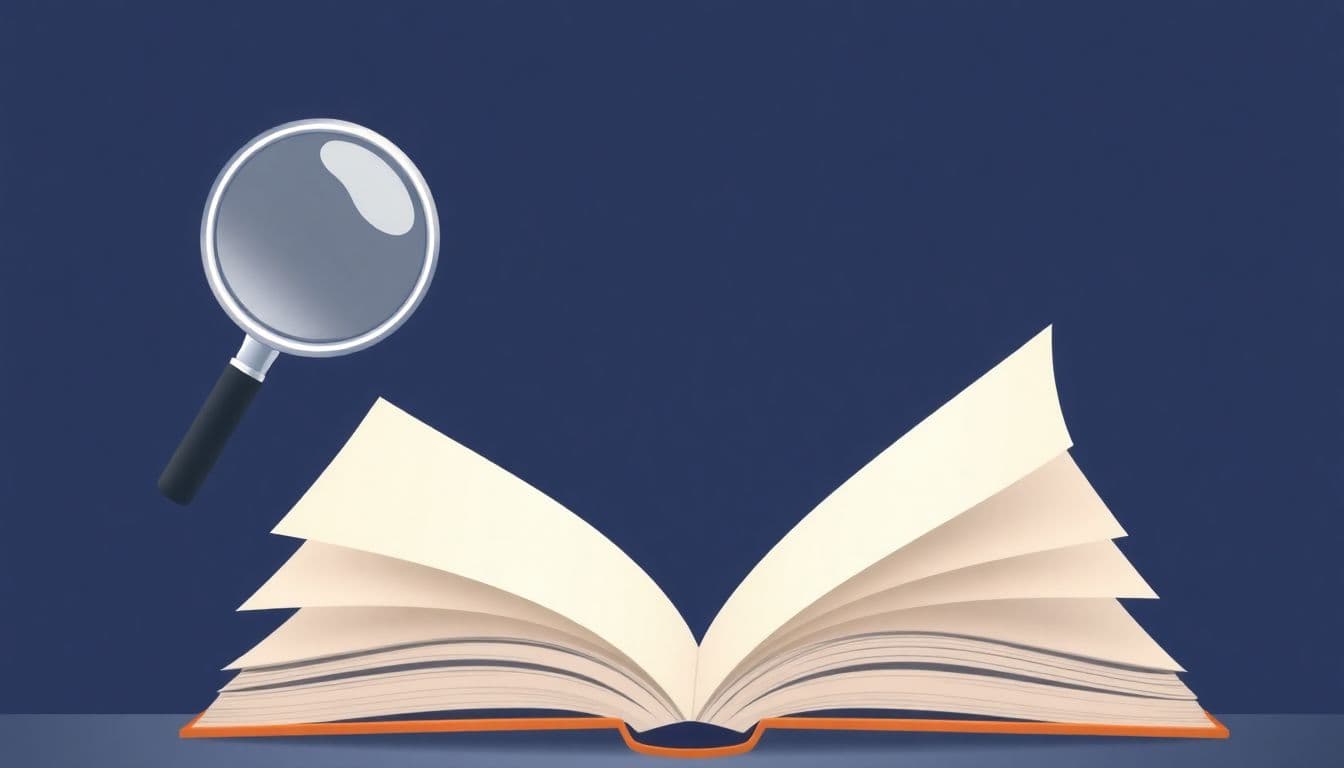Table of Contents
Choosing how to print your book can feel pretty overwhelming, especially when you start looking at all the pricing, services, and confusing technical details out there. Trust me, you’re not alone in feeling unsure about how to even start this process.
But don’t stress too much—by the end of this guide, you’ll know exactly how to compare popular printing services, figure out whether print-on-demand works better than offset printing for you, and even how to nail the customization and distribution stuff easily. We’re here to keep things simple and hassle-free.
Ready to get sorted? Let’s jump in!
Key Takeaways
- Compare pricing and features of top services: Amazon KDP is affordable but has limited customizations; BookBaby or Lulu offers better quality and more options.
- For small print runs and new authors, use print-on-demand; for larger quantities (500+ copies), consider offset to save money.
- If selling mainly online, choose Amazon KDP for simplicity; IngramSpark works best for bookstore distribution, while local sales benefit from ordering smaller batches upfront.
- Use standard lightweight papers for novels, heavier glossy papers for visual or photo books; pick paperback covers for affordability, hardcover for premium editions.
- Prioritize a user-friendly upload process like Amazon KDP if new to publishing; services with more customization may require technical expertise.
- Keep an eye on newer trends like eco-friendly printing methods and interactive augmented reality to give readers unique experiences.
- Your final choice should depend clearly on the book type, expected sales volumes, and budget constraints.

Step 1: Compare Popular Book Printing Services (Price & Features)
If you’re thinking about printing a book and not sure where to start, you’re probably eyeing big names like Amazon KDP, BookBaby, Lulu, Blurb, and IngramSpark. Prices between these companies vary quite a bit, so it’s smart to compare carefully.
Amazon KDP is fantastic if you’re on a tight budget—no upfront fees, plus handy integration with Amazon’s massive audience. On the downside, your customization options, especially for print quality and deluxe covers, are pretty limited. BookBaby and Lulu give you more room to tweak paper types, finishes, and special layouts, but that means you’ll have to pay upfront, usually between $299 and $699 for packages.
For instance, if you’re making something colorful like children’s books or photo books, companies like BookBaby or Blurb offer better quality printing and more professional binding options, giving your readers higher-quality visuals. If your project is a straightforward novel or nonfiction book with fewer images, Amazon KDP or IngramSpark are excellent, budget-friendly choices.
A simple way to compare services is by noting how many books you’ll be printing and the type of content you’re printing. A quick spreadsheet laying out pricing per copy, added setup fees, cover options, interior paper quality, and available distribution channels can help make your decision clearer.
Step 2: Decide Between Print-on-Demand or Offset Printing
Wondering if you should go with print-on-demand (POD) or offset printing for your books? Here’s what you need to consider:
POD services like Amazon KDP and Lulu allow you to order as few as one book at a time. You’ll get your copies quickly without stocking hundreds in your living room. The cost per book usually stays consistent, but it can be pricier overall if you need very large quantities.
Offset printing, however, could save you tons if you’re planning to print in bulk (around 500 books or more). The larger the batch, the cheaper each copy becomes. But remember, with offset you’ll face high upfront costs, plus storage issues and inventory headaches if your book doesn’t sell quickly.
Let’s say you’re printing a coloring book (check out some helpful ideas on how to publish a coloring book). Offset printing might be a smarter choice if you can confidently sell larger batches, thanks to lower per-unit prices. But if you’re a new author testing the waters, then POD is probably your safer bet, giving you flexibility and lower risk as you build your readership.
Step 3: Know Your Distribution Needs (Amazon, Bookstores, or Local)
Before picking your book printing option, it’s good to figure out exactly where you’ll sell your book. Each distributor has slightly different demands, so think ahead to avoid headaches later.
Amazon KDP offers built-in access to Amazon’s massive online marketplace—that’s millions of potential readers, instantly available at no extra cost to you. For digital-savvy authors with limited distribution experience, this ease helps significantly.
If you aim to see your books on bookstore shelves, you’ll want options like IngramSpark, helpful thanks to their wholesale distribution program that gets your books into physical stores. Keep in mind that bookstores usually prefer to get books returnable with significant discounts, so pricing and stocking logistics can get tricky.
Looking at local distribution? Maybe you’re planning on selling in small local stores, or at events and signings around town—then nothing beats ordering your books upfront in manageable batches. This approach tends to be cheaper per unit, and you maintain better control over quality checks. You can find a bit more about local selling strategies in this guide on increasing book sales effectively, packed with practical tips.
Bottom line, knowing your primary distribution channel upfront shapes your printing decisions effectively, saving you both hassle and money down the road.

Step 4: Choose Customization Options for Paper, Cover, and Size
Alright, now let’s talk customization. If you want your book to stand out, selecting the right paper, cover, and size is super important.
For novels or nonfiction, standard cream or white paper at about 50-70lb weight works great, making reading easy on the eyes without blowing your budget.
If you’re creating something more visual like a colorful children’s book, graphic novel, or even a coffee-table photography book, aim for heavier glossy paper (around 80-100lb) that shows off vibrant images nicely.
Covers matter—it’s literally the first impression your book makes. Paperback covers are budget-friendly, perfect if you’re just starting out or planning to distribute primarily online via Amazon or other digital platforms.
Hardcover books look professional and last longer, ideal for special editions or collectors’ versions readers might hold onto.
Picking the right trim size can also affect pricing and reader experience. Standard fiction sizes range from 5″x8″ to 6″x9″, while picture books or graphic novels often use larger, customized formatting to show off detailed artwork.
If you’re unsure about the best fonts to use for your cover to boost attraction and readability, check out these recommended fonts to design an eye-catching book cover.
Main takeaway? Choose customization options based entirely on your content type, audience expectations, and selling strategy—matching quality with cost-effectiveness.
Step 5: Check Ease of Use, Upload and Support Comparisons
Here’s something most authors overlook when choosing a printing service—platform usability, upload processes, and customer support.
You don’t want to spend days figuring out a company’s confusing upload system—not fun at all. Amazon KDP shines here; its user-friendly interface helps even absolute beginners easily upload manuscripts and covers with minimal hassle.
On the other side, services like IngramSpark offer tons of customization but their file requirements and upload systems can be tricky if you’re new to publishing.
The best way to gauge ease of use? Actually create a free account with each service you’re considering and upload your book files as a test run without publishing immediately.
Support matters immensely, especially if you hit roadblocks. Companies like BookBaby and Lulu are known for quick email or chat responses, helping you fix any issues.
Check real customer reviews, browse self-publishing forums, or even try contacting the support team yourself before you commit. That helps spot potential frustrations ahead of time.
If you prefer writing on a smartphone or you’re always on the go, here’s a handy resource on writing books directly from your mobile device, making your workflow smoother.
In a nutshell: ease of use and reliable support might be the deciding factor beyond pricing and print quality, so don’t skip researching these.
Step 6: Look Into New Book Printing Trends for 2025
Why keep your head stuck in the past? Book printing is shifting fast, and keeping tabs on upcoming trends for 2025 ensures you won’t be left behind.
Did you know digital printing is expected to capture over half of the global printing market value by 2025? This is driven mainly by short-run and customized productions, perfect for indie authors.
In fact, the global printing market’s set to hit $960 billion by 2025, growing steadily as digital solutions outpace traditional methods, as detailed by recent industry analyses.
Environmentally friendly printing practices are big too. Expect to see more companies incorporating recycled paper, eco-friendly inks, and energy-efficient digital machinery.
Innovative designs leveraging augmented reality (AR) are gaining traction. Imagine readers scanning covers to see interactive characters or scenes—that’s becoming real.
E-commerce-driven packaging and smart printing solutions are propelling another wave, targeting authors interested in crafting premium reading experiences.
Whether you’re self-publishing or aiming at mass distribution through bookstores, aligning with these upcoming digital and eco-friendly trends can future-proof your project, increasing your chances of standing out and selling more.
Step 7: Make Your Decision Based on Project Type and Quantity
Ready for decision time? Ultimately, the right choice boils down to the nature of your book project and how many copies you need upfront.
If you’re cautiously breaking into publishing and unsure about initial sales volume, starting cautiously with a print-on-demand service like Amazon KDP or Lulu makes practical sense.
Maybe you’ve built up a solid fanbase and know you’ll likely sell 500+ copies quickly—in that case, offset printing becomes much more cost-efficient on a per-book basis.
As a reference point: according to recent stats, U.S. book printing sales are projected to hit around $4.9 billion by 2024, growing steadily every year.
This solid growth signals that a well-planned strategy taking into account project specifics, customization preferences, and distribution channels can genuinely pay off for independent authors.
Unsure if offset printing is still affordable? Printing tariffs in the U.S. cost book publishers around $90 million annually, according to recent industry reports.
Figuring out your book’s genre might also affect your initial print numbers. For instance, if you’re creating a graphic novel, you’ll want to check out our detailed tips on publishing top-notch graphic novels, since print volumes often differ by genre.
Bottom line: always pick a printing partner and quantity based clearly on your unique situation—your book type, expected readership, and initial marketing reach.
FAQs
Consider quantity and budget. Print-on-demand suits lower quantities or testing markets without upfront costs, while offset printing becomes cost-effective for larger volume print runs due to lower per-unit costs once you exceed around 500 copies.
Focus on your intended audience and reach. Amazon offers a wider online market, bookstores help local visibility or niche readers, and direct local distribution can build strong community ties and provide personal interaction with your readers.
Match customizations to your book’s genre and reader expectations. For example, thick matte paper conveys premium content, glossy covers suit visual materials or children’s books, and popular sizes such as 6″x9″ are versatile for various genres.
Expect increased personal customization, environmentally responsible printing processes, rising popularity of smaller print runs, and enhanced integration of digital technologies like augmented reality elements to create interactive reading experiences.



